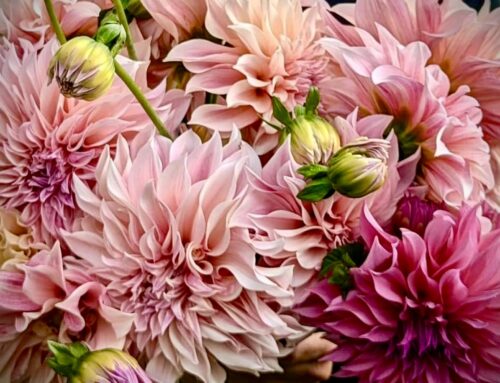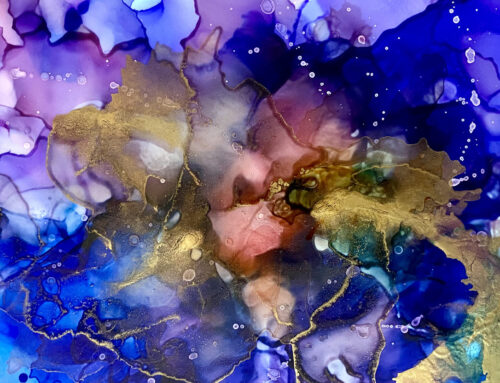When I hear the word “transition” the first thing that comes to mind are all the different ways to describe what it is. Here are just a few: change, passage from one state or place to another, transformation, segue, an evolutionary shift, conversion and so on. I think my favorite is “metamorphosis” because it typically conjures the image of a butterfly coming into its full beauty and glory. And isn’t that how I want to think and feel about transitions? I just want to focus on the ending where everything is new, pretty and basically, well… done and over with.
Transition literally means “movement, a going across,” a journey, rather than a destination. It comes in many varieties throughout our lives, and yet we often seemed surprised by it, and even resist it. The rhythm of life IS the rhythm of transition. It is the pulse of our time here on earth. Our human journey begins as transition, and ends as transition. Change is as natural as breathing. And while we have a cognitive understanding of this, we still seem to struggle with transition.
Sometimes the need to change shows up because there’s an element of how we are living life that is no longer working. Other times we may intentionally create the changes happening in our lives – such as marriage, children, school, career, weight loss, moving, retiring, and emotional healing to name a few. Often transition is unexpected, such as illness, death, accidents, relationships and job loss. Is it any wonder we may fear the unexpected? We have become accustomed to “unplanned” as not being very enjoyable. And we certainly are relieved or grateful when we have come to the end of it.
Yet the best part of transition is actually not the ending. Remember it’s a journey, not a destination. The most powerful, meaningful, and frankly most healing part is right smack in the middle of it. It’s also the part we tend to enjoy the least. Why? Because we are standing on the shores of deep waters, knowing the other side awaits us, and our deepest yearning tells us we need to dive deeply into those waters, yet we also know we will be diving into the unknown.
Times of transition and change are often filled with questions, uncertainty, and may lack a sense of security – even when we plan a life change! We become immersed in a great paradox of life – feeling the strength and groundedness of certainty, which is the deeper place of Source inside that doesn’t change. At the same time we are invited to dive deeply into the waters of the mystery of life. Change becomes the soul’s dance between what we know and what is unfolding.
Transition is about being reduced to NOW, so that some deeper part of me begins to live more fully, holding nothing back. Diving into those deep waters is diving into each experience of change fully and completely, being vulnerable and open. We are called into this life to navigate a changing landscape, and we do this by learning to listen, by staying committed to seeing what is before us, and through learning to be in the NOW moment by living life unrehearsed.
Navigating a changing landscape
We are delivered through all transitions by emptying ourselves of the noise that often is very loud in our head. In our humanness when change becomes painful, we often get distracted and hooked into blaming, or the “why” game, rather than adapt to the shifting nature of life.
The “noise” is really just a signal of our desire to have a sense of knowing, to have safety, and an assurance of things. By emptying ourselves of the noise, through meditation for example, we can hear the sacred heartbeat of the ground of our being, and give our attention completely to what is before us, to NOW – even though we may not know what we will hear. It is getting still so that we can hear the quiet voice in our heart that never changes saying, “Yes, I am willing to be changed.”
Given the chance, that still place inside us will speak to each of us. Centuries ago monks read scripture out loud so that they could really be listening to it. They would choose a phrase and sit with it, repeating it aloud over and over so that they would be open and receptive to its meaning. They let go of the conscious mind and practiced hearing the words in order to expand their capacity for knowing God. It gave them new depth and attentiveness to God in their life.
When I listen, not with my ears, but with my whole being, the activity of Spirit is brought to life for me, and it is just as real as the sound of howling wind or the clap of thunder during a storm or music that washes through me. Listening gives me the certainty within myself when the outer world seems so uncertain.
Transitions invite us to make a commitment to look at what is before me, even if I don’t like what I see. We dispel the dark by looking at it long enough for our eyes to adjust – we make the dark conscious, and what we fear about the uncertainty is dispelled. Too often we want to move quickly through transition. We may see the experiences filled with obstacles working against our greater good, and we want to get to the end where things are done and life can be smooth again.
However, the purpose of obstacles is they are teachers. Often by engaging the obstacle, we discover it wasn’t an obstacle it was simply our perception of it. But I can only come to this place of understanding if I am willing to slow down and commit to looking at what is before me. How often do I pause as I move from one experience to the next? Did I stop and feel the landscape (feelings, thoughts and sensations) of one place before crossing into another? What do I notice?
It can be a frightening and disheartening process when transition dismantles my current phase of life. But if I remain committed to looking, it is followed by a process of grace, which is the eroding away of what is not life-giving, and then reassembling my world into my next phase of wholeness. When I take the time to pause and look at my world, I hear the silent voice of the sacred heart calling to me saying “Yes, I am willing to be changed,” and I step into the cycle of being and becoming, of transformation and healing.
Finally, to navigate a changing landscape, I must be willing to be present to NOW, which means learning to live my life unrehearsed. How often do we find ourselves in life trying to figure out what to say, what to do, how to act in any number of scenarios – especially in times of change?
Many times in life, we have had experiences that have allowed us to become adept at fending off the unexpected, so that we could AVOID the transition. We want to preplan so much of life, how we might react and even learn to be deliberate and methodical in our activities in life. Being prepared is a skill, not a philosophy of life.
When I find myself seeking for ways to rehearse my way through life, it is simply a desire for certainty, for knowing, and just like the “noise” it is pointing me to the sacred heartbeat of the ground of my being, inviting me to give my full attention to what is before me. Every moment is unrepeatable, laden with gifts. When I commit to being in any moment with a full heart and soul, I am being asked to do things differently, even if I don’t know how. I am being asked to help create that changing landscape I am navigating.
- So what is changing in your life?
- What keeps you from being present to NOW?
- How have you habitually related and responded to change and transitions?
- What is needing your attention now?
Transitions are healing because they are journeys that lead us to a greater experience of our wholeness through the continual dance of knowing and certainty. It is by and through the landscape of transition that we learn to listen, to stay committed to looking and learn to live life unrehearsed. In this way, through our vulnerability, we become softened by life, rather than hardened, which ultimately allows us for transformation.
Each of us is a unique instrument playing our part in this world – creating this symphony we call life. When I step fully into the journey, I allow my story to shape me into a beautiful instrument with strings that can be plucked by the winds of my experience. Transitions are the tuning forks, continually fine tuning us inside and out, into something more beautiful and glorious, like the butterfly, with wings to fly.







